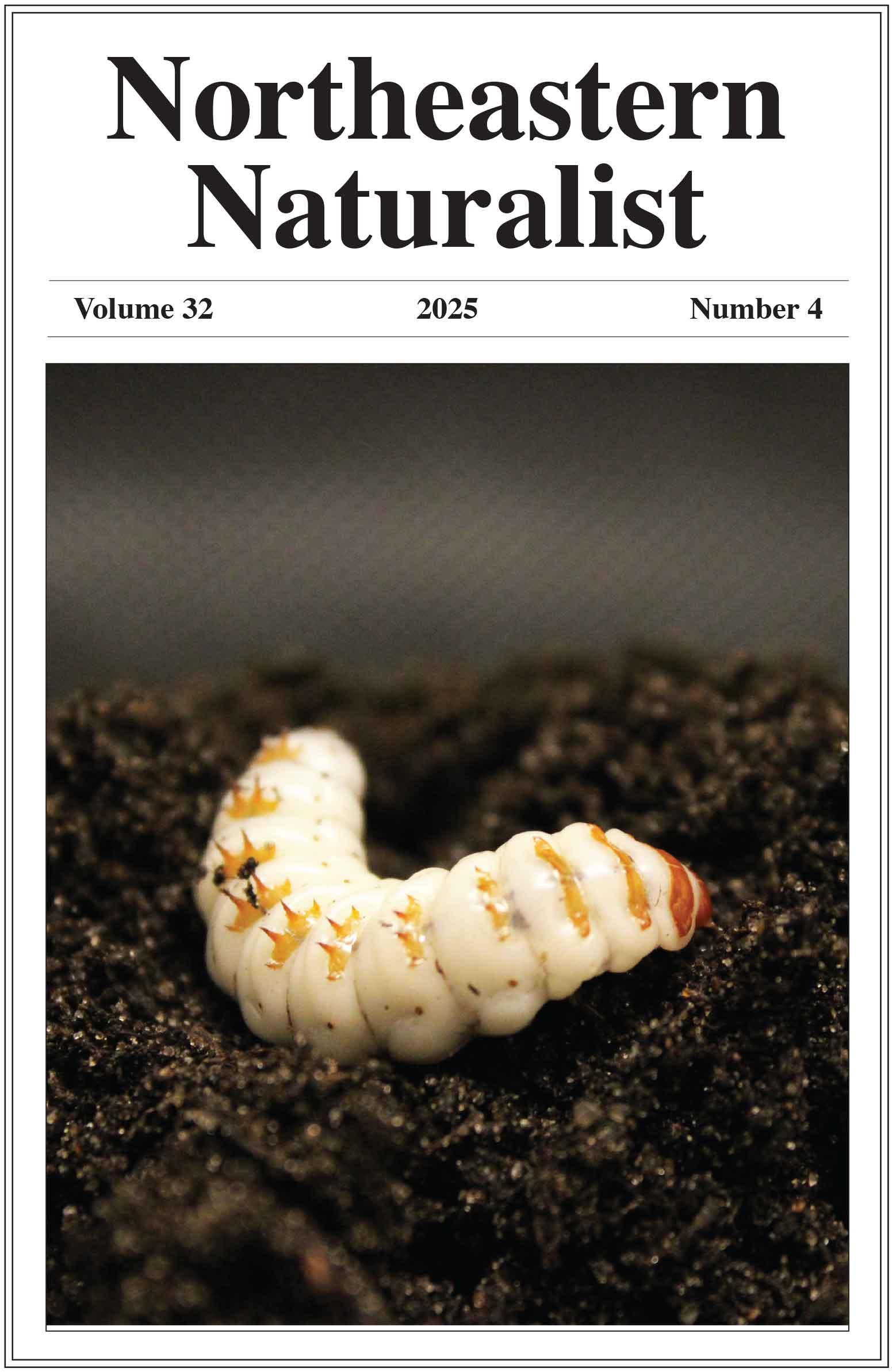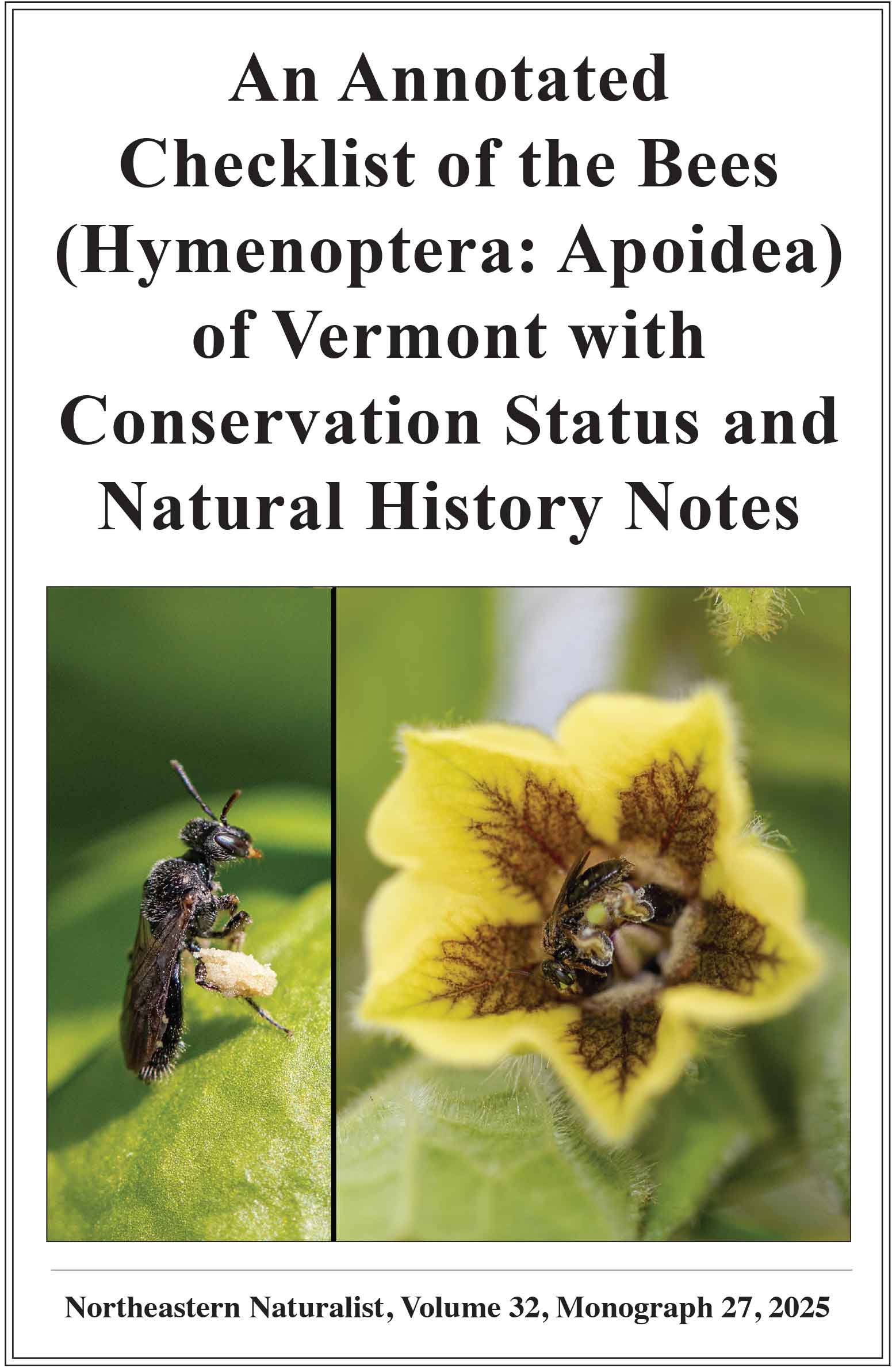Long-term Spatial Ecology of Three Long-lived Turtles
H. Patrick Roberts1,*, Lisabeth L. Willey2,3, Michael T. Jones4, Joan Milam1, and David I. King5
1Department of Environmental Conservation, University of Massachusetts, 204 Holdsworth Hall, Amherst, MA 01003. 2Department of Environmental Studies, Antioch University New England, 40 Avon St. Keene, NH 03431. 3American Turtle Observatory, 90 Whitaker Road.New Salem, MA 01355. 4Natural Heritage and Endangered Species Program, Massachusetts Division of Fisheries and Wildlife, 1 Rabbit Hill Road, Westborough, MA 01581. 5US Forest Service, Northern Research Station, University of Massachusetts, 201 Holdsworth Hall, Amherst, MA 01003. *Corresponding author.
Northeastern Naturalist, Volume 31, Special Issue 12: C92–C118
First published early online: 7 May 2025
Abstract
Space use and movement patterns are integral to population dynamics and are often indicative of vulnerability to anthropogenic threats. Spatial ecology research can be fundamental to conservation strategies but is largely biased toward relatively short-term patterns. Without an understanding of space use over temporal scales commensurate with lifespan and the processes that may influence movement, conservation tools derived from short-term movement patterns may be misguided or ineffective, particularly for long-lived species. The goal of this study was to characterize the long-term (multi-decadal) spatial ecology of 3 long-lived (80–110 yrs) turtle species. We revisited 6 areas where Terrapene carolina carolina (Eastern Box Turtle), Glyptemys insculpta (Wood Turtle), and Clemmys guttata (Spotted Turtle) had been studied using telemetry 10–26 years prior with the objective of recapturing and tracking the same individuals that were previously studied to understand patterns in long-term site fidelity. We recaptured and tracked 43 of 79 turtles from original studies and examined the degree of long-term annual, seasonal, and overwintering fidelity by comparing measures of fidelity (home-range overlap, distance between weekly centroids, and distance between overwintering sites) between short-term (interannual comparisons within a study period; e.g., 1994 vs. 1995) and long-term (interannual comparisons across study periods; e.g., 1994 vs. 2018) temporal scales. We observed generally high long-term fidelity, with predicted home-range overlap between study periods of ~40–60% among species. Nevertheless, long-term fidelity (particularly at the annual and overwintering level) was generally lower than short-term fidelity for all species, highlighting that the temporal scale of typical short-term telemetry studies does not completely characterize long-term movement patterns. Females of all species generally displayed very high long-term seasonal fidelity with the exception of the nesting season, for which Wood and Spotted Turtles displayed markedly lower long-term fidelity compared to short-term fidelity, suggesting that this study may have captured the temporal scale of nesting habitat turnover. In contrast to females, male Wood and Spotted Turtles showed lower long-term fidelity for nearly all seasons. Overall, the findings of this study suggest that land protection directed toward known population activity areas may remain effective for a large proportion of populations for at least multiple decades. However, more comprehensive land protection may require large buffers (>200 m) to capture long-term shifts in home range, particularly by males. When interpreting these findings, it is important to note that not all the radio-tagged turtles from time period 1 were captured and radio-tagged in time period 2, and therefore results may be biased toward more sedentary individuals that were easier to capture and thus overestimate fidelity.
![]() Download Full-text pdf (Accessible only to subscribers. To subscribe click here.)
Download Full-text pdf (Accessible only to subscribers. To subscribe click here.)
Access Journal Content
Open access browsing of table of contents and abstract pages. Full text pdfs available for download for subscribers.
Issue-in-Progress: Vol. 33(1) ... early view
Check out NENA's latest monograph and Special Issue:













 The Northeastern Naturalist is a peer-reviewed journal that covers all aspects of natural history within northeastern North America. We welcome research articles, summary review papers, and observational notes.
The Northeastern Naturalist is a peer-reviewed journal that covers all aspects of natural history within northeastern North America. We welcome research articles, summary review papers, and observational notes.